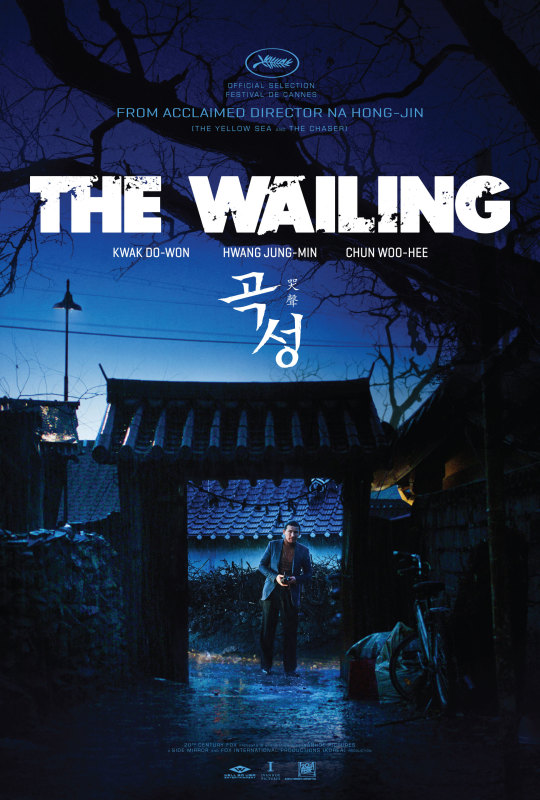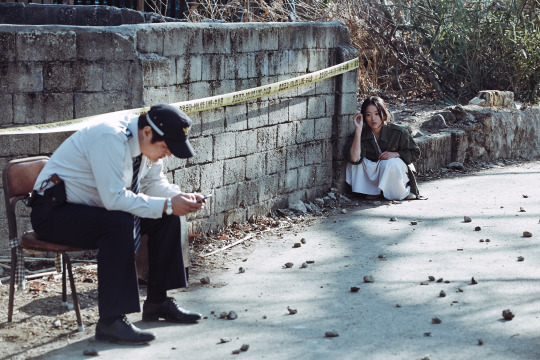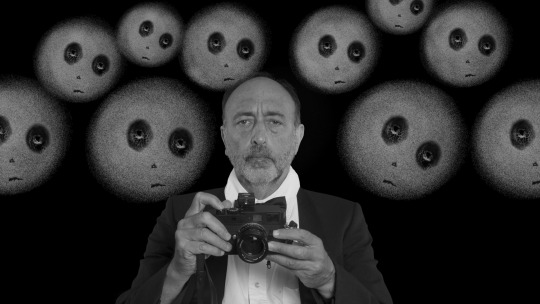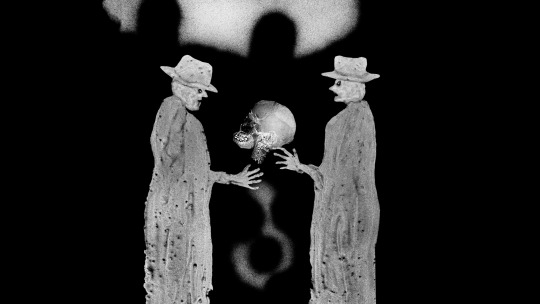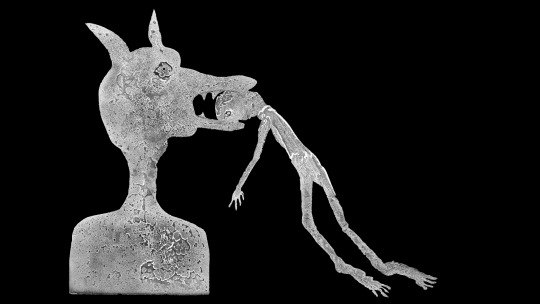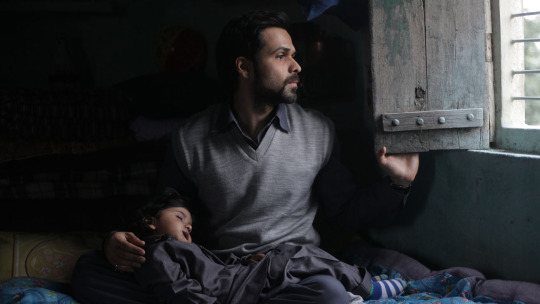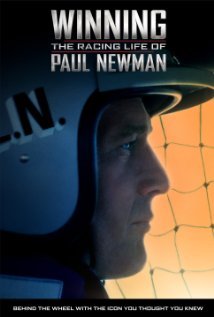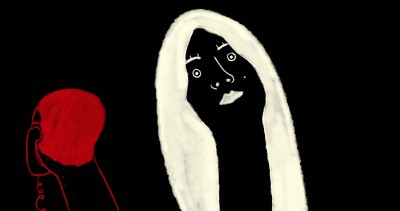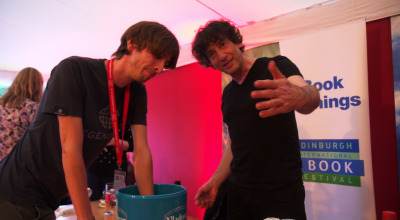Opening Gala is the World Premiere of Kazuya Shiraishi’s Japanese crime epic Twisted Justice, Centerpiece Gala is the North American Premiere of Ralston Jover's Hamog (Haze), and Closing Gala is the International Premiere of Adam Tsuei’s The Tenants Downstairs from Taiwan
51-film festival features spotlights on the cinemas of Hong Kong, South Korea, and Southeast Asia
Festival honorees include Lifetime Achievement awardee Iwai Shunji, Screen International Rising Stars Go Ayano, Jelly Lin, and Teri Malvar, and Star Asia Award recipients Miriam Yeung, Lee Byung-hun, and John Lloyd Cruz
New York, NY (May 31, 2016) – The Film Society of Lincoln Center and Subway Cinema announced today the complete lineup for the 15th New York Asian Film Festival (NYAFF), which will take place from June 22 to July 5 at the Film Society and July 6 to 9 at the SVA Theatre (333 West 23rd Street). North America’s leading festival of popular Asian cinema will showcase 51 feature films, including one World Premiere, one International Premiere, 16 North American premieres, two U.S. Premieres, and 14 films making their New York City debuts. Featuring in-person appearances by more than 30 international filmmakers and celebrity guests from Hong Kong, Japan, South Korea, Taiwan, and Southeast Asia.
The Opening Night gala will be the World Premiere of Kazuya Shiraishi’s wild crime epic Twisted Justice, based on Yoshiaki Inaba’s autobiography and starring Japan’s hottest actor (and Rising Star honoree) Go Ayano as his country’s most corrupt police detective. The Centerpiece Gala is the North American Premiere of Ralston Jover's Hamog (Haze), an empowering and thrilling tale about a gang of street kids, headlined by Rising Star honoree Teri Malvar. Closing Night is the International Premiere of Adam Tsuei’s The Tenants Downstairs. Based on a screenplay and story by former NYAFF guest Giddens Ko (You Are the Apple of My Eye), the blackly comic, sexually explicit thriller features Simon Yam as a landlord spying on and manipulating the lives of his tenants. Filmmakers and cast members from the three films will be in attendance at their respective screenings.
"We set out this year to champion a much broader range of Asian cinema," said NYAFF Executive Director Samuel Jamier. "For example, we are particularly excited by a new breed of noir film, rooted in social issues, that is emerging in both China and Southeast Asia. With these and other selections in the lineup, we want to show that Asian films are still exploring new directions for world cinema."
The Opening Night gala will be the World Premiere of Kazuya Shiraishi’s wild crime epic Twisted Justice, based on Yoshiaki Inaba’s autobiography and starring Japan’s hottest actor (and Rising Star honoree) Go Ayano as his country’s most corrupt police detective. The Centerpiece Gala is the North American Premiere of Ralston Jover's Hamog (Haze), an empowering and thrilling tale about a gang of street kids, headlined by Rising Star honoree Teri Malvar. Closing Night is the International Premiere of Adam Tsuei’s The Tenants Downstairs. Based on a screenplay and story by former NYAFF guest Giddens Ko (You Are the Apple of My Eye), the blackly comic, sexually explicit thriller features Simon Yam as a landlord spying on and manipulating the lives of his tenants. Filmmakers and cast members from the three films will be in attendance at their respective screenings.
"We set out this year to champion a much broader range of Asian cinema," said NYAFF Executive Director Samuel Jamier. "For example, we are particularly excited by a new breed of noir film, rooted in social issues, that is emerging in both China and Southeast Asia. With these and other selections in the lineup, we want to show that Asian films are still exploring new directions for world cinema."
Faithful to its Chinatown roots and central to its lineup, the festival will feature a Hong Kong Panorama, showcasing the most innovative films from the Special Administrative Region, with the support of Hong Kong Economic and Trade Office New York. From a coming-of-age drama about high-school girls who become involved in the sex trade (Lazy Hazy Crazy), to a feel-good baseball movie set within Hong Kong’s public-housing system (Weeds on Fire), to a hard-boiled gangster omnibus (the Johnnie To–produced Triviṣa), these films are revitalizing local genre staples with a fresh spin. The program also includes Nick Cheung’s Keeper of Darkness, Herman Yau’s The Mobfathers, and Adam Wong’s She Remembers, He Forgets.
The South Korean Cinema lineup includes a vibrant mix of thrillers (both supernatural and surreal) from first and second-time directors that are daring twists on genre films (Alone, The Boys Who Cried Wolf, and The Priests), and insightful art-house dramas focusing on social issues from established directors (Jung Ji-woo’s Fourth Place, about how much we demand from the next generation, and E J-yong’s The Bacchus Lady, about the plight of the country’s abandoned elderly). In co-presentation with the Korean Movie Night New York Master Series, NYAFF will feature the two latest films by Lee Joon-ik, who will attend screenings of Dongju: The Portrait of a Poet (with producer and screenwriter Shin Yeon-shick) and The Throne. Together with Lee Jong-pil’s The Sound of a Flower, the triptych examines the scars of South Korea’s troubled history. The festival’s 11 South Korean films are presented with the support of the Korean Cultural Center New York.
NYAFF’s Taiwan Cinema Now! section defies genres with first films by new directors Adam Tsuei (The Tenants Downstairs), Vic Cheng (The Tag-Along), and Lee Chung (The Laundryman) that expand the horizons of the island's genre cinema. The section, presented with the support of the Taipei Cultural Center of TECO in New York, is completed by two powerful dramas from established filmmakers Tom Lin (Zinnia Flower) and Cheng Wen-tang (Maverick), which explore loss and redemption.
Southeast Asian Cinema receives a greater focus this year, reflecting how the region is making some of the world’s most innovative films. Highlights include the Tamil-language Jagat (Brutal) from Malaysia, the acutely observed Heart Attack from Thailand, and empowering youth noir Hamog (Haze) from the Philippines. Just as glamorous and talented as their Northern neighbors, stars who will appear in person include John Lloyd Cruz, Teri Malvar, Sid Lucero, Gwen Zamora and Annicka Dolonius (stars of the Philippines’ sensuous surfing drama Apocalypse Child), and Apinya Sakuljaroensuk (from the social-media slasher flick Grace).
Southeast Asian Cinema receives a greater focus this year, reflecting how the region is making some of the world’s most innovative films. Highlights include the Tamil-language Jagat (Brutal) from Malaysia, the acutely observed Heart Attack from Thailand, and empowering youth noir Hamog (Haze) from the Philippines. Just as glamorous and talented as their Northern neighbors, stars who will appear in person include John Lloyd Cruz, Teri Malvar, Sid Lucero, Gwen Zamora and Annicka Dolonius (stars of the Philippines’ sensuous surfing drama Apocalypse Child), and Apinya Sakuljaroensuk (from the social-media slasher flick Grace).
Special screenings include a full day of films on July 4 from noon until midnight celebrating the indie spirit of Hong Kong cinema. The day will conclude with the hotly anticipated 10 Years, winner of Best Film at the Hong Kong Film Awards, which examines life in Hong Kong in an imaginary future when Cantonese is a second-class language and where the island has completely fallen under Mainland control. Special screenings also include the Founding Fathers Tribute, a focus on the favorite films of the festival’s programmers, from Michael Arias’s madcap animated feature Tekkonkinkreet to Shinya Tsukamoto’s Tetsuo: The Iron Man and Pang Ho-cheung’s Love in the Buff starring Miriam Yeung, alongside a Surprise Screening of a contemporary classic that holds special significance to the founders of NYAFF.
The 2016 Star Asia Awards honorees are Hong Kong’s Miriam Yeung, the Philippines’ John Lloyd Cruz, and South Korea’s Lee Byung-hun, and all three box office mega-stars will be in New York in person to discuss their newest films and their careers. Yeung, whose charismatic girl-next-door persona epitomizes the anything-is-possible spirit of Hong Kong, stars in in Adam Wong’s romantic drama She Remembers, He Forgets. The film is her return to the screen after headlining the biggest local hit of 2015, Little Big Master. Cruz, the Philippines’ most popular movie star, who broke box-office records in last year’s romantic drama Second Chance, transforms himself into a father who will do anything in festival selection Honor Thy Father, a powerful crime epic from Erik Matti. Lee, South Korean cinema’s leading man and one of the few to successfully cross over to Hollywood, stars in Inside Men, Woo Min-ho’s takedown of the corruption at the heart of South Korea’s institutions. Lee, who has been seen in multiple blockbuster action franchises (G.I. Joe, Red 2, Terminator Genisys), is best known for South Korean films The Good, the Bad, the Weird, I Saw the Devil, and Bittersweet Life (by Kim Jee-woon), and in key roles as a tormented soldier in Park Chan-wook’s Joint Security Area and as a lowlife-turned-king in Choo Chang-min’s Masquerade.
In addition to the Star Asia Awards, previously announced award recipients include:
Lifetime Achievement Award – Iwai Shunji. The first Japanese recipient of the award, he will present his three cinematic epics—Swallowtail Butterfly (1996), All About Lily Chou-Chou (2001), and A Bride for Rip Van Winkle (2016), also starring Ayano—during the festival's opening weekend. Iwai has proven himself one of Asia’s most influential filmmakers since his mid-1990s Undo, Picnic, and Love Letter. He is recognized for capturing the spirit of the times, and stretching the cinematic language of Asian cinema. Despite his early successes, he has continued to reinvent himself, recently directing his first animated feature.
Screen International Rising Star Asia Awards – China’s Jelly Lin, Japan’s Ayano Go, and the Philippines’ Teri Malvar. Lin made a powerful debut this year, showcasing her natural comedic skills in Stephen Chow's fish-out-of-water tale The Mermaid, China’s highest-grossing film; 15-year-old Malvar has already proven herself one of Asia’s most naturally gifted actresses, and stars in festival selection Hamog (Haze), in which her violent street kid character is kidnapped into a twisted household to work as its maid; and Ayano, Japan’s hottest actor of 2016 who is being recognized for his chameleon-like range, stars in two of the festival’s key films, Twisted Justice and A Bride for Rip Van Winkle.
Daniel A. Craft Award for Excellence in Action Cinema – Yue Song. The Chinese actor, director, and stunt choreographer will be honored for his old-school, balls-to-the-wall instant-classic kung-fu flick The Bodyguard. Yue found fame online by uploading action-packed training videos and short films that became cult hits in China, before making his first feature King of the Street. His new film has found a natural home in our anniversary edition.
Credits:Curated by executive director Samuel Jamier, senior programmer Stephen Cremin, and programmers Rufus de Rham and Claire Marty.
The New York Asian Film Festival is co-presented by Subway Cinema and the Film Society of Lincoln Center and takes place from June 22 to July 5 at Film Society’s Walter Reade Theater, and July 6 to 9 at SVA Theatre.
The New York Asian Film Festival is co-presented by Subway Cinema and the Film Society of Lincoln Center and takes place from June 22 to July 5 at Film Society’s Walter Reade Theater, and July 6 to 9 at SVA Theatre.
Keep up to date with information at www.subwaycinema.com and www.filmlinc.org. Subway Cinema can be followed on Facebook at www.facebook.com/nyaff and Twitter at www.twitter.com/subwaycinema.
FULL LINEUP (51): *Guests in attendance; see next section for complete list
CHINA (4):
- The Bodyguard (dir. Yue Song, 2016)*
- Mr. Six (dir. Guan Hu, 2015)
- Saving Mr. Wu (dir. Ding Sheng, 2015)
- What’s in the Darkness (dir. Wang Yichun, 2016)*
- The Bodyguard (dir. Yue Song, 2016)*
- Mr. Six (dir. Guan Hu, 2015)
- Saving Mr. Wu (dir. Ding Sheng, 2015)
- What’s in the Darkness (dir. Wang Yichun, 2016)*
HONG KONG PANORAMA (9):
Presented with the support of Hong Kong Economic and Trade Office New York
- The Bodyguard (dir. Sammo Hung, 2016)
- Keeper of Darkness (dir. Nick Cheung, 2015)
- Lazy Hazy Crazy (dir. Luk Yee-sum, 2015)
- Love in the Buff (dir. Pang Ho-cheung, 2012)
- The Mermaid (dir. Stephen Chow, 2016)*
- The Mobfathers (dir. Herman Yau, 2016) w/short Killer and Undercover (dir. Lau Ho-Leung, 2016)
- She Remembers, He Forgets (dir. Adam Wong, 2015)*
- Triviṣa (dirs. Frank Hui, Jevons Au & Vicky Wong, 2016) *
- Weeds on Fire (dir. Chan Chi-fat, 2016)
Presented with the support of Hong Kong Economic and Trade Office New York
- The Bodyguard (dir. Sammo Hung, 2016)
- Keeper of Darkness (dir. Nick Cheung, 2015)
- Lazy Hazy Crazy (dir. Luk Yee-sum, 2015)
- Love in the Buff (dir. Pang Ho-cheung, 2012)
- The Mermaid (dir. Stephen Chow, 2016)*
- The Mobfathers (dir. Herman Yau, 2016) w/short Killer and Undercover (dir. Lau Ho-Leung, 2016)
- She Remembers, He Forgets (dir. Adam Wong, 2015)*
- Triviṣa (dirs. Frank Hui, Jevons Au & Vicky Wong, 2016) *
- Weeds on Fire (dir. Chan Chi-fat, 2016)
HONG KONG SPECIAL SCREENING (1):
- 10 Years (dirs. Kwok Zune, Chow Kwun-wai, Jevons Au, Ng Ka-leung & Wong Fei-pang, 2015)*
- 10 Years (dirs. Kwok Zune, Chow Kwun-wai, Jevons Au, Ng Ka-leung & Wong Fei-pang, 2015)*
JAPAN (13):
- All About Lily Chou-Chou (dir. Iwai Shunji, 2001)*
- A Bride for Rip Van Winkle (dir. Iwai Shunji, 2016)*
- Creepy (dir. Kiyoshi Kurosawa, 2016)
- Hentai Kamen 2: The Abnormal Crisis (dir. Yuichi Fukuda, 2016)
- Kiyamachi Daruma (dir. Hideo Sakaki, 2015)
- Miss Hokusai (dir. Keiichi Hara, 2015)
- Swallowtail Butterfly (dir. Iwai Shunji, 1996)*
- Tekkonkinkreet (dir. Michael Arias, 2006)*
- Tetsuo: The Iron Man (dir. Shinya Tsukamoto, 1989)
- Twisted Justice (dir. Kazuya Shiraishi, 2016)
- What a Wonderful Family! (Yoji Yamada, 2016)
- All About Lily Chou-Chou (dir. Iwai Shunji, 2001)*
- A Bride for Rip Van Winkle (dir. Iwai Shunji, 2016)*
- Creepy (dir. Kiyoshi Kurosawa, 2016)
- Hentai Kamen 2: The Abnormal Crisis (dir. Yuichi Fukuda, 2016)
- Kiyamachi Daruma (dir. Hideo Sakaki, 2015)
- Miss Hokusai (dir. Keiichi Hara, 2015)
- Swallowtail Butterfly (dir. Iwai Shunji, 1996)*
- Tekkonkinkreet (dir. Michael Arias, 2006)*
- Tetsuo: The Iron Man (dir. Shinya Tsukamoto, 1989)
- Twisted Justice (dir. Kazuya Shiraishi, 2016)
- What a Wonderful Family! (Yoji Yamada, 2016)
Plus, an additional two titles to be announced at a later date
SOUTH KOREA (11):
Presented with the support of Korean Cultural Center New York
- Alone (dir. Park Hong-min, 2015)
- The Bacchus Lady (dir. E J-yong, 2016)
- The Boys Who Cried Wolf (dir. Kim Jin-hwang, 2015)*
- Dongju: The Portrait of a Poet (dir. Lee Joon-ik, 2016)*
- Fourth Place (dir. Jung Ji-woo, 2015)
- Inside Men (dir. Woo Min-ho, 2015)*
- The Priests (dir. Jang Jae-hyun, 2015)
- Seoul Station (dir. Yeon Sang-ho, 2015)
- The Sound of a Flower (dir. Lee Jong-pil, 2015)
- The Throne (dir. Lee Joon-ik, 2015)*
- A Violent Prosecutor (dir. Lee Il-hyeong, 2016)
Presented with the support of Korean Cultural Center New York
- Alone (dir. Park Hong-min, 2015)
- The Bacchus Lady (dir. E J-yong, 2016)
- The Boys Who Cried Wolf (dir. Kim Jin-hwang, 2015)*
- Dongju: The Portrait of a Poet (dir. Lee Joon-ik, 2016)*
- Fourth Place (dir. Jung Ji-woo, 2015)
- Inside Men (dir. Woo Min-ho, 2015)*
- The Priests (dir. Jang Jae-hyun, 2015)
- Seoul Station (dir. Yeon Sang-ho, 2015)
- The Sound of a Flower (dir. Lee Jong-pil, 2015)
- The Throne (dir. Lee Joon-ik, 2015)*
- A Violent Prosecutor (dir. Lee Il-hyeong, 2016)
SOUTHEAST ASIA (7)
- Apocalypse Child (dir. Mario Cornejo, 2015)*
- Grace (dirs. Ornusa Donsawai & Pun Homchuen, 2016)*
- Hamog (Haze) (dir. Ralston Jover, 2015)*
- Heart Attack (dir. Nawapol Thamrongrattanarit, 2015)
- Honor Thy Father (dir. Erik Matti, 2015)*
- Jagat (Brutal) (dir. Shanjhey Kumar Perumal, 2015)*
- Yellow Flowers on the Green Grass (dir. Victor Vu, 2015)
- Apocalypse Child (dir. Mario Cornejo, 2015)*
- Grace (dirs. Ornusa Donsawai & Pun Homchuen, 2016)*
- Hamog (Haze) (dir. Ralston Jover, 2015)*
- Heart Attack (dir. Nawapol Thamrongrattanarit, 2015)
- Honor Thy Father (dir. Erik Matti, 2015)*
- Jagat (Brutal) (dir. Shanjhey Kumar Perumal, 2015)*
- Yellow Flowers on the Green Grass (dir. Victor Vu, 2015)
TAIWAN (5):
Presented with the support of the Taipei Cultural Center of TECO in New York
- The Laundryman (dir. Lee Chung, 2015)
- Maverick (dir. Cheng Wen-tang, 2015)
- The Tag-Along (dir. Cheng Wei-hao, 2015)
- The Tenants Downstairs (dir. Adam Tsuei, 2016)*
- Zinnia Flower (dir. Tom Lin, 2015)
Presented with the support of the Taipei Cultural Center of TECO in New York
- The Laundryman (dir. Lee Chung, 2015)
- Maverick (dir. Cheng Wen-tang, 2015)
- The Tag-Along (dir. Cheng Wei-hao, 2015)
- The Tenants Downstairs (dir. Adam Tsuei, 2016)*
- Zinnia Flower (dir. Tom Lin, 2015)
LIST OF GUESTS ATTENDING:
CHINA (3):
- Jelly Lin (actress); The Mermaid - Wang Yichun (director); What’s in the Darkness - Yue Song (actor/director); The Bodyguard
- Jelly Lin (actress); The Mermaid - Wang Yichun (director); What’s in the Darkness - Yue Song (actor/director); The Bodyguard
HONG KONG (8):
- Jevons Au (director); Triviṣa& 10 Years - Andrew Choi (producer); 10 Years - Chow Kwun-wai (director); 10 Years - Kwok Zune (director); 10 Years - Ng Ka-leung (director/producer); 10 Years - Adam Wong (director); She Remembers, He Forgets - Wong Fei-pang (director); 10 Years - Miriam Yeung (actress); She Remember, He Forgets & Love in the Buff
- Jevons Au (director); Triviṣa& 10 Years - Andrew Choi (producer); 10 Years - Chow Kwun-wai (director); 10 Years - Kwok Zune (director); 10 Years - Ng Ka-leung (director/producer); 10 Years - Adam Wong (director); She Remembers, He Forgets - Wong Fei-pang (director); 10 Years - Miriam Yeung (actress); She Remember, He Forgets & Love in the Buff
JAPAN (6)
- Michael Arias (director); Tekkonkinkreet - Go Ayano (actor); Twisted Justice &A Bride for Rip Van Winkle - Yoshinori Chiba (producer); Twisted Justice - Hideo Sakaki (director); Kiyamachi Daruma - Iwai Shunji (director); All About Lily Chou-Chou, A Bride for Rip Van Winkle & Swallowtail Butterfly - Kazuya Shiraishi (director); Twisted Justice
- Michael Arias (director); Tekkonkinkreet - Go Ayano (actor); Twisted Justice &A Bride for Rip Van Winkle - Yoshinori Chiba (producer); Twisted Justice - Hideo Sakaki (director); Kiyamachi Daruma - Iwai Shunji (director); All About Lily Chou-Chou, A Bride for Rip Van Winkle & Swallowtail Butterfly - Kazuya Shiraishi (director); Twisted Justice
SOUTH KOREA (4)
- Kim Jin-hwang (director); The Boys Who Cried Wolf - Lee Byung-hun (actor); Inside Men - Lee Joon-ik (director); Dongju: The Portrait of a Poet & The Throne - Shin Yeon-shick (producer/screenwriter); Dongju: The Portrait of a Poet
- Kim Jin-hwang (director); The Boys Who Cried Wolf - Lee Byung-hun (actor); Inside Men - Lee Joon-ik (director); Dongju: The Portrait of a Poet & The Throne - Shin Yeon-shick (producer/screenwriter); Dongju: The Portrait of a Poet
SOUTHEAST ASIA (9)
- Annicka Dolonius (actress); Apocalypse Child - John Lloyd Cruz (actor/producer); Honor Thy Father - Monster Jimenez (producer); Apocalypse Child - Sid Lucero (actor); Apocalypse Child - Teri Malvar (actress); Hamog (Haze)
- Dondon Monteverde (producer); Honor Thy Father - Shanjhey Kumar Perumal (director); Jagat (Brutal)
- Apinya Sakuljaroensuk (actress); Grace - Gwen Zamora (actress); Apocalypse Child
- Annicka Dolonius (actress); Apocalypse Child - John Lloyd Cruz (actor/producer); Honor Thy Father - Monster Jimenez (producer); Apocalypse Child - Sid Lucero (actor); Apocalypse Child - Teri Malvar (actress); Hamog (Haze)
- Dondon Monteverde (producer); Honor Thy Father - Shanjhey Kumar Perumal (director); Jagat (Brutal)
- Apinya Sakuljaroensuk (actress); Grace - Gwen Zamora (actress); Apocalypse Child
TAIWAN (3)
- Adam Tsuei (director); The Tenants Downstairs - Ivy Shao (actress); The Tenants Downstairs - Li Xing (actress); The Tenants Downstairs
- Adam Tsuei (director); The Tenants Downstairs - Ivy Shao (actress); The Tenants Downstairs - Li Xing (actress); The Tenants Downstairs

